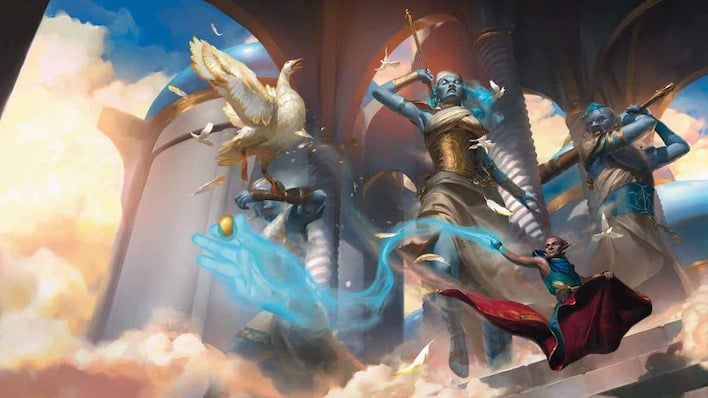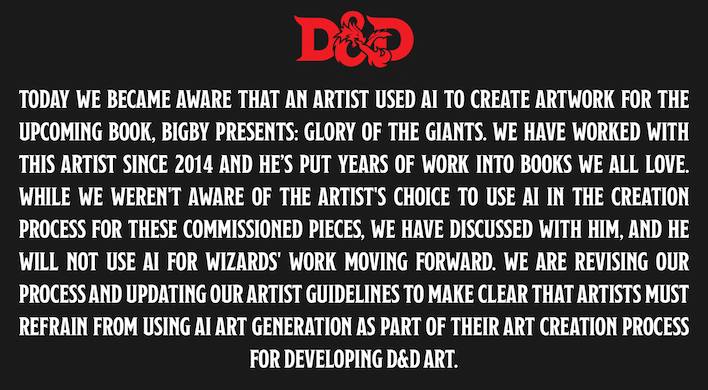D&D Faces Boycott Over AI Artwork Scandal, Wizards Of The Coast Responds

The next official Dungeons & Dragons sourcebook will be Bigby Presents: Glory of the Giants, a book that goes into depth on the various giant races, their ecology, their history, and of course, their game mechanics. However, some fans have threatened to boycott the book, or even D&D itself, over a controversy where it turns out that some of the artwork in the book was AI-generated, whether in whole or in part.
You see, the thing about AI art is that once you've spent some time generating it yourself, it becomes extremely easy to spot. There are a few characteristic things that AI does which are very obvious and while it's entirely possible to generate AI images without these tell-tales—like mangled hands, weird proportions that seem right at a glance but are very wrong upon checking, and illegible, gibberish text—it definitely takes some effort to do so. If you simply prompt an image, or run your own image through an "img2img" AI, it's easy to tell.
Your author here has quite some experience generating AI images of the sort that can't be posted on HotHardware—because of their nebulous copyright, of course, not whatever you were thinking—and looking at the pictures, it's very obvious that they were created in whole or in part with AI. We're not just making poorly-justified accusations here, though; fans already did that last week. The artist's response was to say, "oh yeah, I used AI to polish up some sketches."
Okay, that's not exactly what he said, but it's a reasonable paraphrase. Ilya Shipkin, who has worked with Wizards of the Coast for 14 years, readily acknowledged on Twitter that he indeed used AI to put finishing touches on some rough art that he drew for the book. It's easy to understand why he might do this; as an artist, he was likely pleased to share his enthusiasm for a new tool in his toolbox. Unfortunately, he did it on Twitter, where users by and large absolutely abhor AI and particularly AI art.

Shipkin's tweet is deleted now, but many people took screenshots, of course. His response only caused the furor to escalate, and finally, Wizards of the Coast (the publishers of Dungeons & Dragons after purchasing creators TSR in 1997) had to acknowledge the community's outrage. The company tweeted a statement saying that it "became aware" that one of its artists used AI in the creation of art for the book, and that it has "discussed with him" [sic] and that he won't use AI for the company's works anymore.
That's right; apparently, it was the artist's decision to do this and Wizards had no idea, so they're going to "rework" the art in the book and make sure to tell all their artists to never use AI art tools ever again. Fair enough; if the fans hate it, cut it out. In your author's mind, however, the real question is "where is Wizards' editorial process?" The "final" AI art arguably looks worse than the sketch that Shipkin posted, and even without the comparison, it doesn't look good. Someone probably should have stepped up to say something before this became a very public issue.
The use of AI image generation isn't going away; that ship has long sailed. How many times has the genie successfully been put back in the bottle? Rather than raging against artists who use AI generators as part of their workflow—something that is going to become more and more common in every field of employment—we should focus our ire on those who do it poorly and lazily, as looks to be case with Shipkin's art here.



